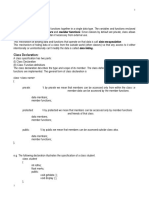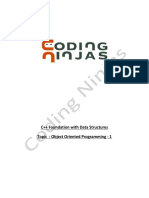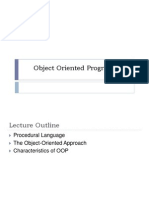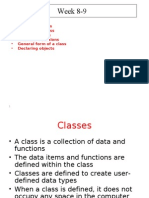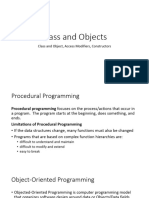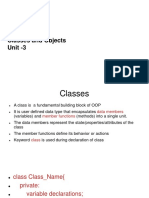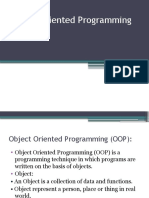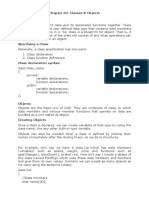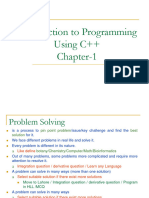0% found this document useful (0 votes)
22 views28 pagesObject Oriented Pogramming (OOP)
Object-Oriented Programming (OOP) is a programming paradigm based on the concept of objects, which encapsulate data and functions. Key features include classes for object creation, real-world modeling, reusability through inheritance, information hiding via encapsulation, and polymorphism. OOP facilitates easier program modification and learning, with examples of languages including C++, Java, and Smalltalk.
Uploaded by
ranaibrahim453Copyright
© © All Rights Reserved
We take content rights seriously. If you suspect this is your content, claim it here.
Available Formats
Download as PDF, TXT or read online on Scribd
0% found this document useful (0 votes)
22 views28 pagesObject Oriented Pogramming (OOP)
Object-Oriented Programming (OOP) is a programming paradigm based on the concept of objects, which encapsulate data and functions. Key features include classes for object creation, real-world modeling, reusability through inheritance, information hiding via encapsulation, and polymorphism. OOP facilitates easier program modification and learning, with examples of languages including C++, Java, and Smalltalk.
Uploaded by
ranaibrahim453Copyright
© © All Rights Reserved
We take content rights seriously. If you suspect this is your content, claim it here.
Available Formats
Download as PDF, TXT or read online on Scribd
/ 28


